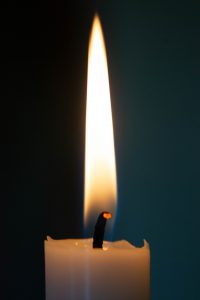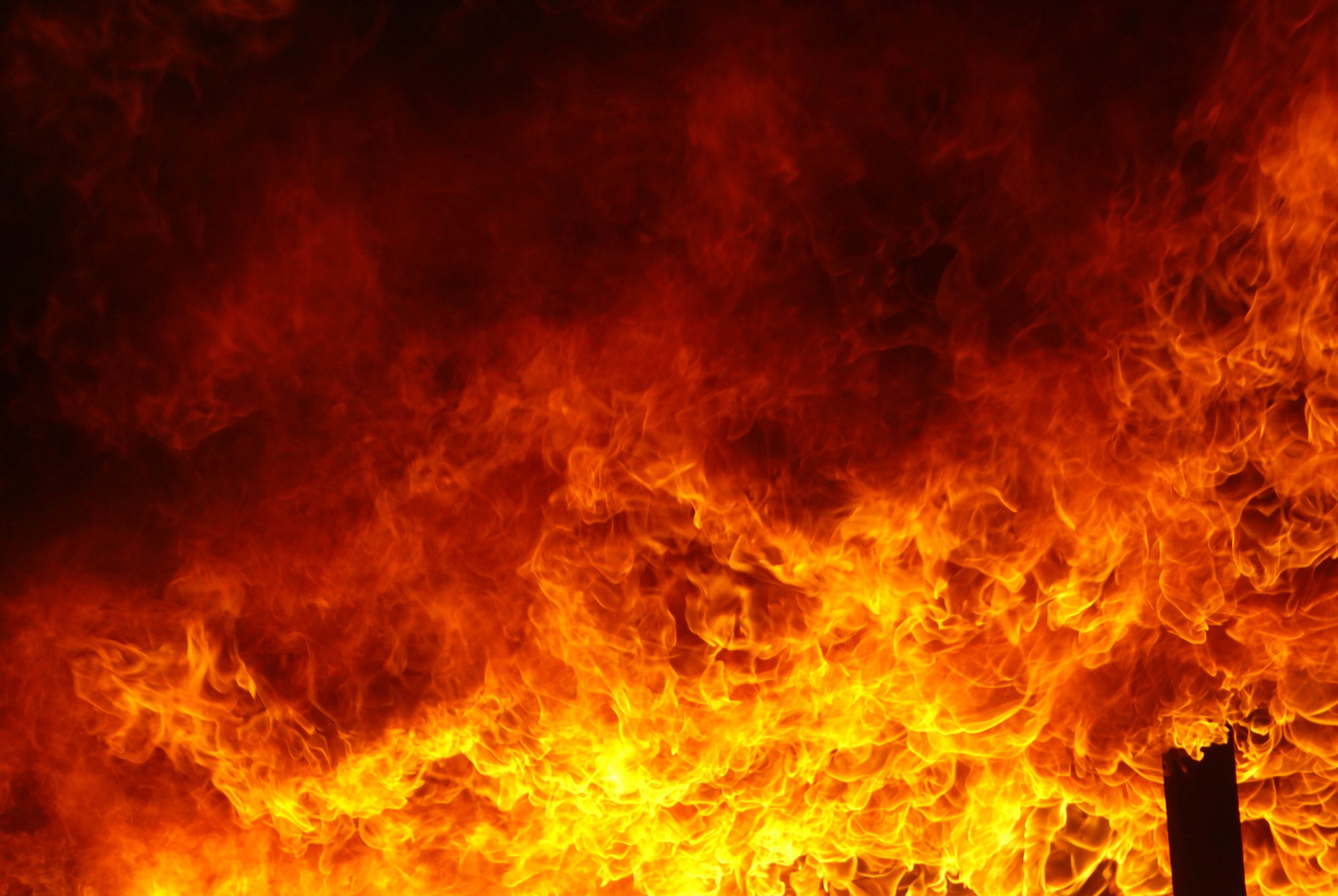
Fire is the visible characteristic of combustion, which in turn is a process of oxidation involving oxygen and some combustible material and where heat and light is emitted. For fire to occur it is necessary that the combustible material is heated so that it decomposes and gives off flammable gases – the material pyrolysis – and that the temperature is sufficiently high so that these gases ignites (or ignited by another fire).
Also, the flammable gases needs to be mixed with air, since the oxygen is needed for oxidation.
If the flammable gases are mixed with air (oxygen) before ignition, a pre-mixed flame occurs – the flammable gases and oxygen are mixed ahead of ignition. If the flammable gases are mixed with air at the moment of combustion, a diffusions flame occurs – the flammable gases and the oxygen diffuses into the combustion zone.
A nice example of a diffusion flame is a flame from a candle – the solid fuel (stearin) is melted due to the heat from the flame and transported up in the wick where it’s gasified. If the fuel is a solid such as wood, it’s is pyrolised (broken down into flammable gases) before it is ignited and burns. The gasified fuel, regardless if it’s vaporized stearin or pyrolised wood, and the oxygen in the air diffuses into the combustion zone, the darker region at the bottom of the flame.
When ignition has occured the released energy keeps the combustion going, provided there is enough fuel and air. Otherwise the fire will go out, eventually.
Generally, a diffusion flame emits a very faint bluish light. The visible yellow (and red) light are emitted from soot particles that are heated and glows. The major part of the radiation is emitted as infrared light, i.e. it is not visible by the eye.
The temperature in a fire can to some extent be estimated by its color. The hotter the flame the more energy is emitted, the shorter are the wave length thus creating a more bluish light. A not so hot fire (or a hot surface) is more red and the temperature is in the range of 400 – 600 degrees Celsius. An intense blue light has a temperature in the range of a thousand degrees Celsius or more.
